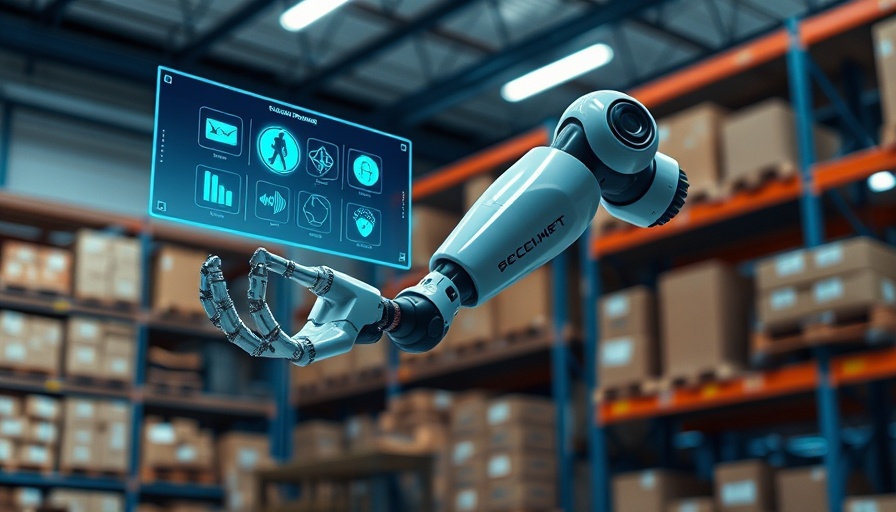
Revolutionizing Warehousing: The Rise of Robotics
In an age where efficiency is paramount, startups like Warp are paving the way for the future of logistics. Founded in 2021, Warp’s mission is clear: streamline shipping supply chains and cut costs for businesses by leveraging a network that includes advanced tech solutions, shippers, carriers, and warehouses.
How Robots Are Transforming the Warehouse Experience
As the co-founder and CEO Daniel Sokolovsky explains, Warp's new initiative involves a shift toward automation, focusing on the workflows within its warehouses rather than long-haul trucking or short-range delivery. Robots are positioned as a tool to navigate the complexities of logistics, and they are being integrated into Warp’s facilities to enhance efficiency dramatically.
The Digital Twin: Simulating Success
Warp's innovative approach began with the creation of a digital twin for its Los Angeles warehouse. By utilizing cameras and computer vision technology, the company has developed a simulation to test various operational changes. “We effectively made a digital twin, or simulation environment for our LA facility,” Sokolovsky noted. This approach allows the company to experiment with different robotic solutions, iterating until success is found.
Challenges and Opportunities: Staffing in the Warehouse Industry
One of the primary challenges facing warehouse operators, as highlighted by CRO Troy Lester, is persistent staffing issues. Many partners within Warp's network express dissatisfaction with their labor conditions—a sentiment echoed throughout the industry. Robots have the potential to alleviate these pain points, offering a solution that not only reduces labor costs but also enhances working conditions for current employees.
Broadening Horizons with Robotics
The introduction of robotics into the warehouse setting is not just about cost reduction—it's also about empowering businesses to handle a slew of challenges. By automating processes such as unloading, storage, and reloading freight, Warp is redefining the operational landscape for its partners. The co-founders are confident that as robotics technology continues to evolve, operations can be streamlined without increasing employee numbers. “We actually think that we can continue this on, and really get to our goals as quickly as possible,” Sokolovsky states.
Business Startups: Taking a Cue from Warp's Innovativeness
For aspiring entrepreneurs, the strategies employed by Warp offer vital lessons. Startups today must embrace automation and technology, as these tools can facilitate growth and environmental sustainability. Consider exploring options like business startup grants or loans that could fund similar innovations in your own endeavors. Keeping abreast of technologies like robotics could very well shape the future of your startup.
Create Your Path with Effective Business Tools
In the rapidly evolving world of startups, aligning with technological trends and embracing automation can provide a competitive edge. Look into implementing business startup software and tools that can help streamline your operations much like Warp has. Utilize online business platforms to reach wider audiences and manage logistics efficiently.
Conclusion: The Future of Warehouse Automation
The intersection of robotics and supply chain efficiency not only presents opportunities for companies like Warp but also serves as a template for upcoming innovating startups. If you're eager to dive into the entrepreneurial space, start by exploring resources tailored to business startups. Understand the landscape—know about funding options, market trends, and automation strategies that can elevate your business to the next level.
 Add Row
Add Row  Add
Add 



Write A Comment